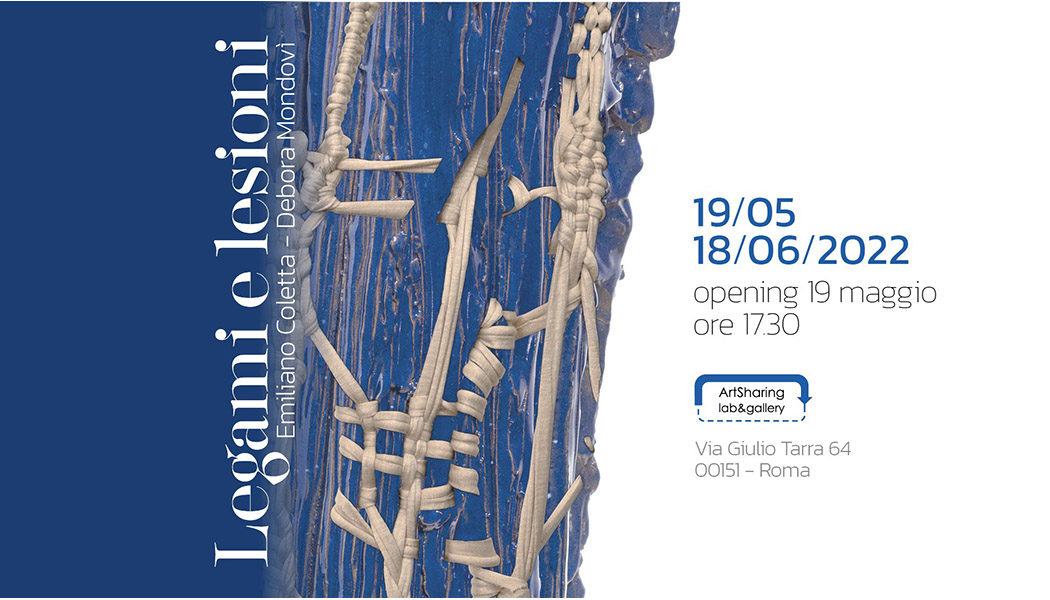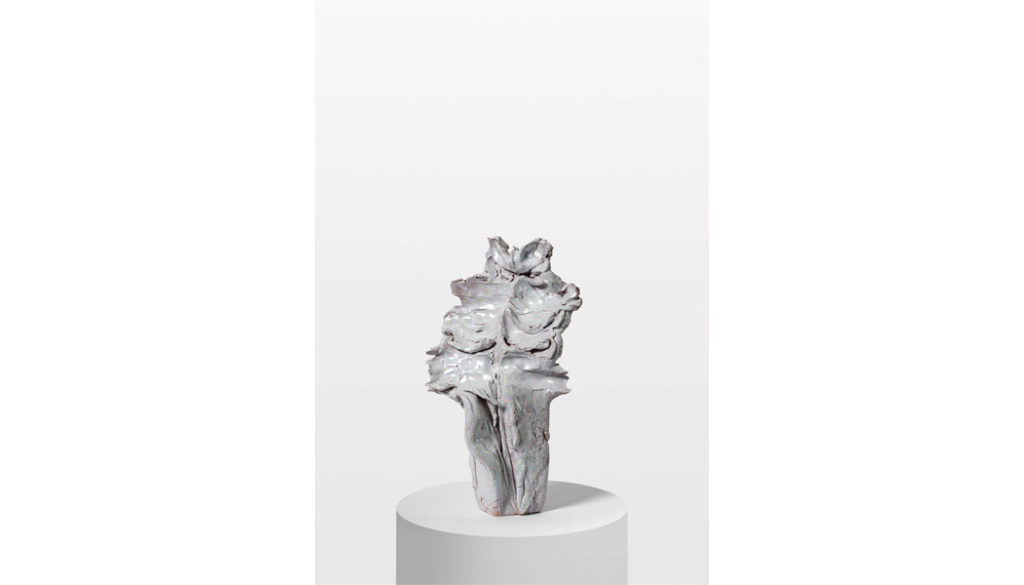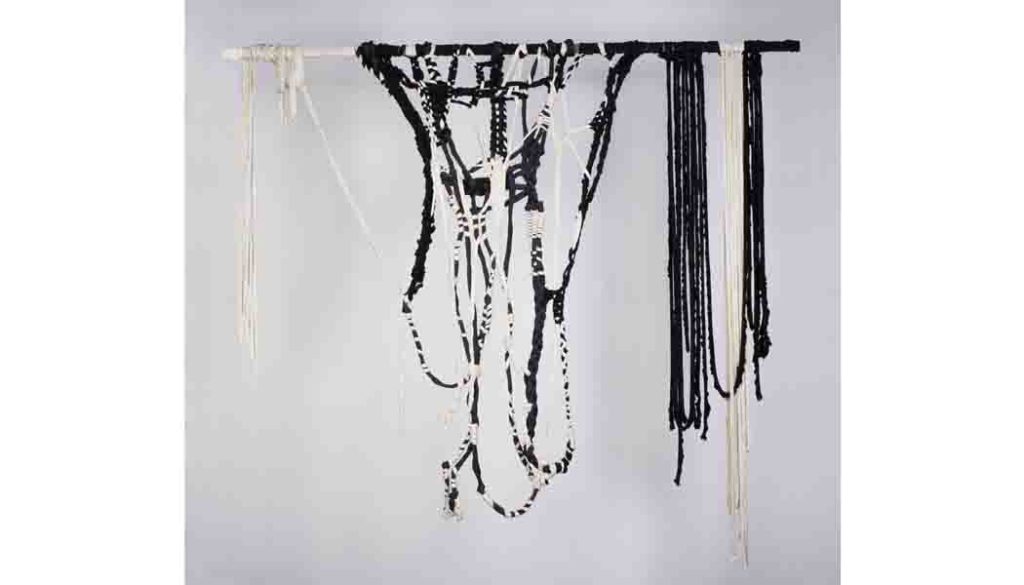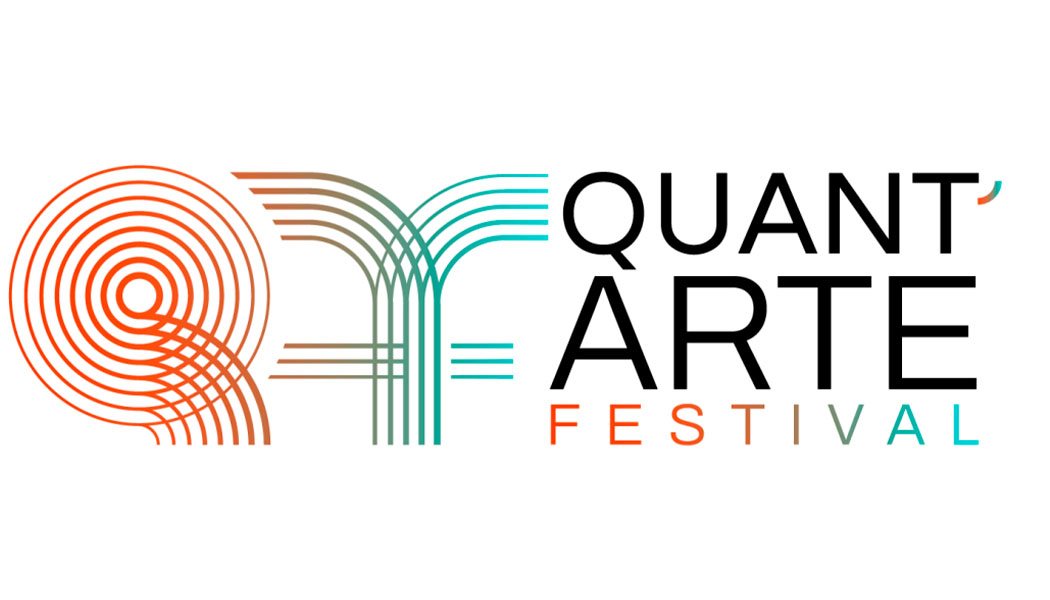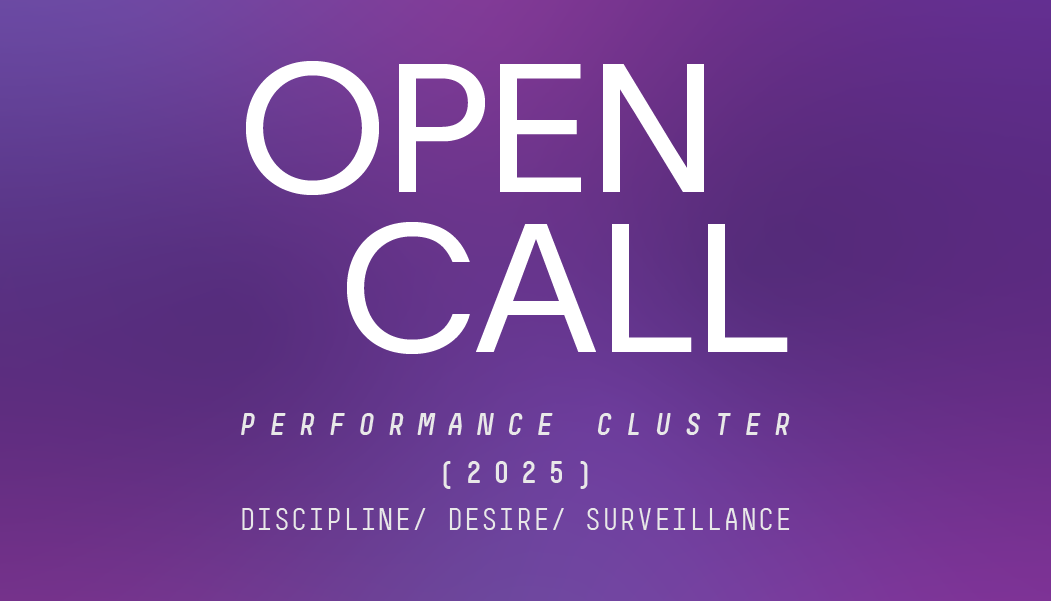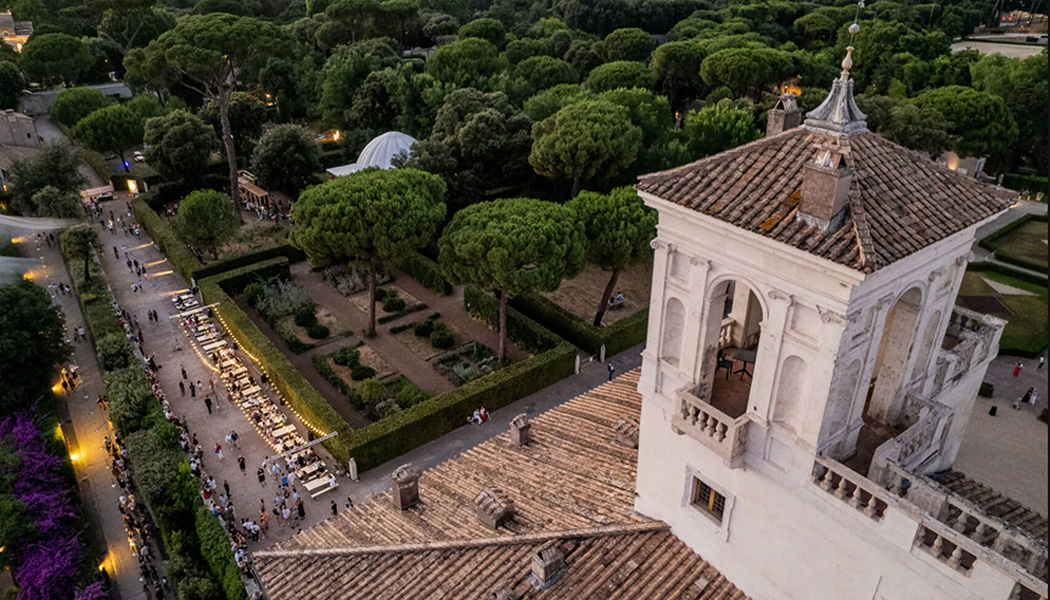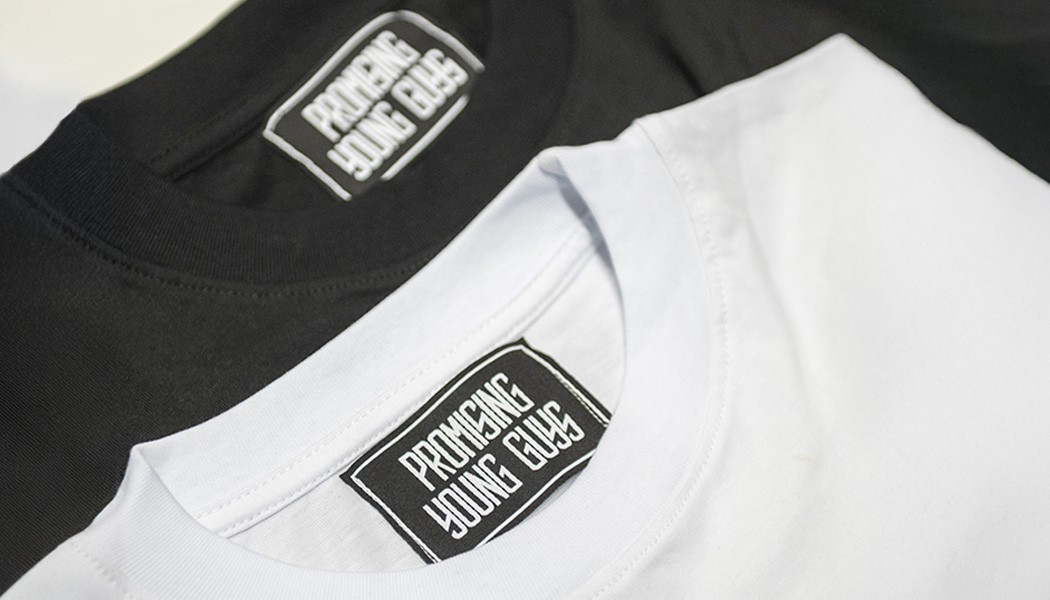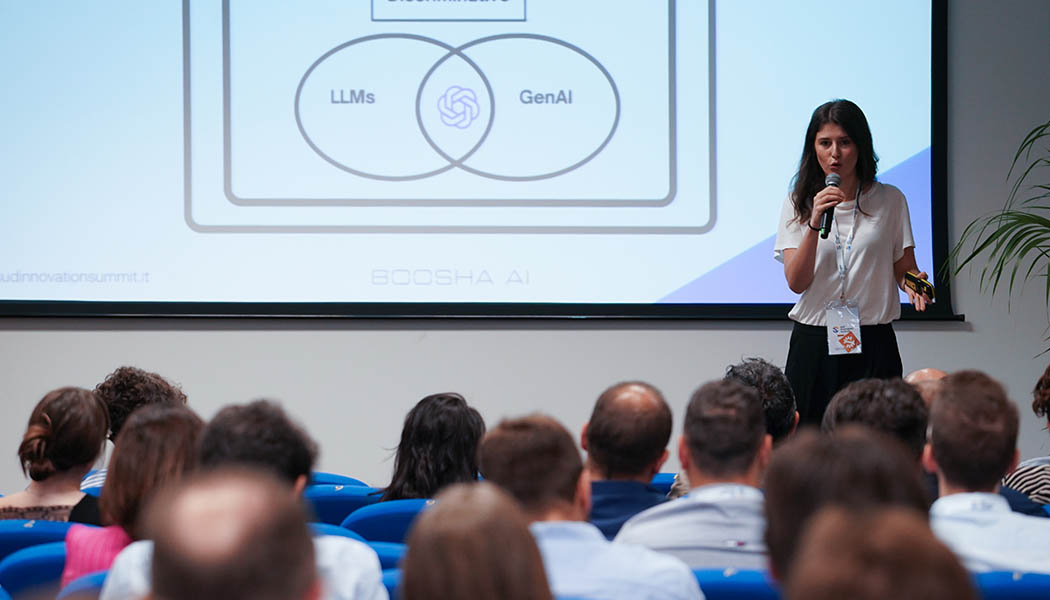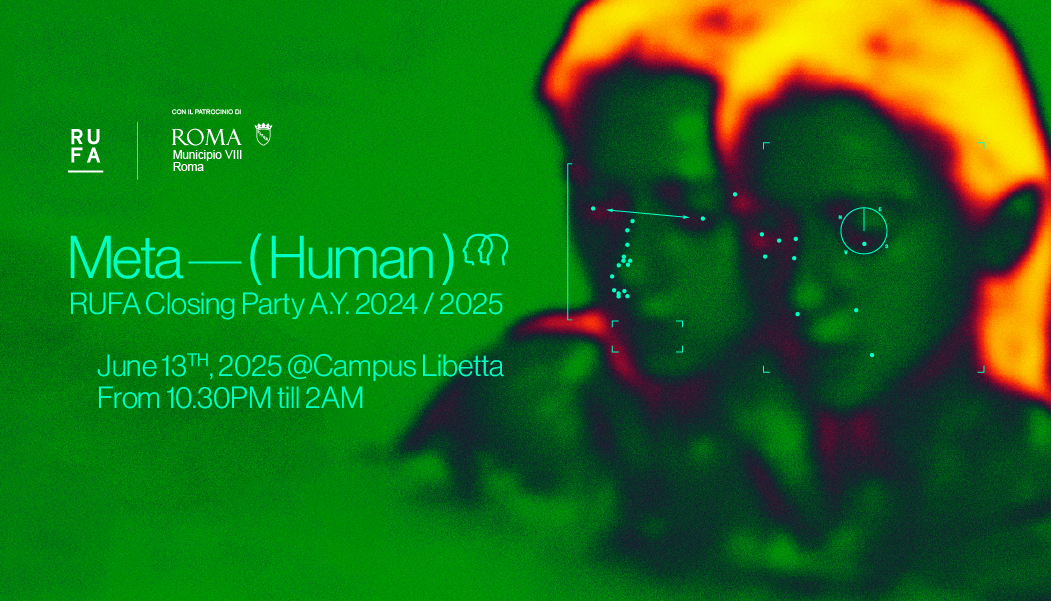The exhibition “Legami e lesioni” by RUFA lecturer Emiliano Coletta, and Debora Mondovì, opens on 19 May at 5.30 p.m.
ArtSharing, a young multifaceted reality very active on the contemporary art scene, is hosting the exhibition ‘Legami e lesioni’ (Links and Injuries) by artists Emiliano Coletta and Debora Mondovì from 19 May to 18 June 2022 in Rome, curated by Penelope Filacchione and Fabrizio Pizzuto.
Ceramic sculpture, terracotta and macramé tapestries are the unpublished works in the exhibition between the two authors: an intriguing artistic dialogue that analyses how, after the pandemic, we pull the strings of human relationships. Hence the lesions and bonds of the title.
In fact, the exhibition project stems from an insight into suspended time: when nothing seemed to be happening beneath the surface of apparent calm, thoughts, ideas and new knowledge were teeming. A returned time that built new bonds.
Hence the primitive idea of the exhibition, which is an idea of welcoming and experimenting with new paths, placing the work of two artists in an unprecedented relationship.
Ties, such as those of Debora Mondovì and her works tying ropes to knots and tapestries that tell the story of the passage of a slow time, which is able to positively mend injuries. Injuries, like those of Emiliano Coletta’s ceramic works, which form almost autonomously on a material worked quickly and deliberately outside the canons, governing chance.
Emiliano Coletta tackles the great dilemma between decoration and meaning without schematism and trappings, working on abstract form as the only one possible for him.
He exhibits his Bagatelle, ceramic sculptures created in the last two years with a title that lightly plays down the age-old diatribe: can ceramics, a traditionally functional material, be an artistic medium? Does the colour, the brilliance of ceramics add or detract from the sculpture? Works that are deliberately born from a ‘wrong’ technique – assuming there is a right technique in art – both in the timing and in the modelling and the mix of coloured oxides that he also uses in the third firing. Oxides that give that colour and lustre that is fundamental for him: not a poetic of materials, but material that lends itself to the idea by seeking a chromatic specificity of the sculptural form.
If the bright colour of Emiliano Coletta’s works enhances the value of plasticity by seeking a chromatic specificity of the sculpture, the dialogue with Debora Mondovì’s natural terracottas becomes fascinating: a chromaticism that is meditatively born from the juxtaposition of the material in its primordial consistency against a formal and chromatic explosion that almost looks like a glowing lava flow.
Floating and twirling with aerial delicacy are the tapestries of Debora Mondovì’s most recent production, they draw arabesques and ideograms of ropes, wefts and fabrics, of projected shadows that oppose the patient determination of the feminine to the volitional impetuosity of the masculine.
An unprecedented narrative is born, where signs knotted and inflicted into the clay write a new geography, stitching up our crumpled souls if necessary.
Tying and cutting are time-consuming operations: even in artistic work, the finished work is not only made up of what tangibly remains, but also of the time devoted to it. Debora Mondovì is a gentle and patient artist and teacher, with great experience even with people with no artistic background.
She proposes an experiential workshop in an art gallery, guiding us in the use of ropes, threads, ropes, raw or precious, thin or thick, inclusions of different materials knotted and tied together as an allegory of relationships between people and with our deepest selves. A mix of weaving and macramé, ancient techniques revised in a modern sense and understood in an artistic and installation sense, transforming matter into suspended ideograms. Not art therapy, but certainly a therapy of the soul: through knotting and weaving we deal with our lives, build relationships, take time to think and talk to ourselves.
Emiliano Coletta
Born in 1974, he has a long career as a sculptor and teacher to his credit. Although he has experimented with all techniques, including painting, he has found in ceramic sculpture his signature style through which he constantly pursues his research.
Recent exhibitions include his participation in the group show Le Altre Opere – Artists Collecting Artists, at the Museo Carlo Bilotti Aranciera di Villa Borghese, Rome.
He defines himself as a ‘furious iconoclast’ and finds precise references in the poetics of Anselm Kiefer and Giacinto Cerone: the docile clay is the right ally that allows him to work around chaos, constructing a plot that gives meaning and structure to chance.
Debora Mondovì
Born in 1965, her history with ceramics began in childhood. From applied art to sculpture, including musical sculpture, in terracotta, in more recent years she has systematically approached knot and string weaving as a new, parallel and autonomous means of expression.
Lightness is Debora Mondovì’s stylistic signature: a lightness conquered ‘in levare’ by transforming the act of modelling the material – be it terracotta or rope – into meditation. This is how her sculptures are born, not infrequently with evocative titles on the human condition: certainly not an overtly autobiographical path, but the bringing back of the personal to the universal, transforming artistic action into common reflection.
